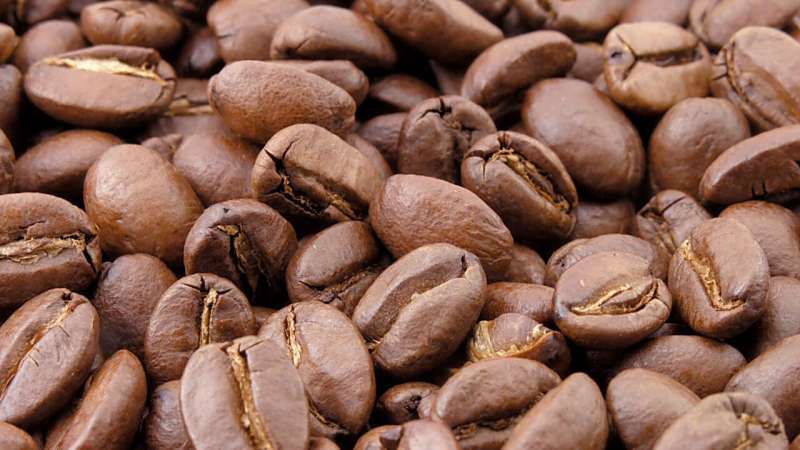Study Uncovers Universal Color Curve for Roasting Arabica Coffee

July 29, 2025
feature
by Tejasri Gururaj, Phys.org
contributing writer
edited by Sadie Harley, reviewed by Robert Egan
scientific editor
associate editor
This article has been reviewed according to Science X's editorial process and policies. Editors have highlighted the following attributes while ensuring the content's credibility:
fact-checked
peer-reviewed publication
trusted source
proofread
A new study in Scientific Reports reveals that all Arabica coffee follows the same color development pattern during roasting, potentially transforming quality control and industry standards.
For a long time, coffee roasting has blended science with artistry, as skilled roasters depend on visual, auditory, and olfactory cues to pinpoint the ideal roast.
However, new research from the UC Davis Coffee Center has uncovered something remarkable. Despite wildly different roasting profiles, techniques, and coffee origins, all Arabica coffee follows the same universal color curve as it transforms from green bean to dark roast.
The study establishes a mathematical relationship that could finally bring objective, quantitative standards to an industry that has relied on subjective assessments for decades. The findings emerge from the most comprehensive study of commercial-scale coffee roasting color dynamics ever conducted.
Phys.org spoke to corresponding author Irwin R. Donis-González, Associate Professor of Cooperative Extension in Postharvest Engineering at the Department of Biological and Agricultural Engineering at UC Davis.
'Since I started working in postharvest, I've been truly fascinated by the significance of color,' said Donis-González. 'Color isn't just about appearance; it's a key indicator of quality for many products, including coffee'
The researchers addressed a missing piece in our scientific understanding of coffee.
Although color has long been considered vital for assessing roast level and quality, there has been surprisingly little understanding of how roasting variables such as temperature and time in commercial roasters affect color development.
Most earlier studies relied on basic laboratory ovens set to constant temperatures, which do not reflect the complex and changing conditions found in commercial roasting. The UC Davis team took an entirely different approach.
'We established the roast profiles based on comprehensive sources, including scientific literature, prior practical experience, and established industry guidelines,' explained Donis-González.
'Using a commercial drum roaster, we systematically varied the temperature ramp rates—also known as rates of rise—to observe their effects on coffee color development throughout the entire roasting process.'
The researchers tested seven dramatically different roasting profiles, each lasting exactly 16 minutes but with vastly different energy dynamics, from 'fast start' profiles with high initial heat to 'slow start' approaches with gradual temperature increases.
They sampled the roasting coffee every single minute, creating an unprecedented high-resolution picture of how color develops throughout the process.
The most striking discovery came when the team plotted their color measurements in the L*a*b* color space.
The L*a*b* color space is a scientific color system designed to match human visual perception. The L* coordinate represents lightness, while a* covers the green-to-red spectrum and b* spans blue-to-yellow hues.
'The L*a*b* color space is particularly adequate for quantifying roast color development because it can detect subtle variations that might be missed by the human eye, ensuring reliable evaluation across different lighting conditions and reducing subjective bias,' said Donis-González.
Regardless of whether they used fast, slow, or medium roasting profiles, and whether the coffee came from Uganda, Indonesia, or El Salvador, every single sample followed the same fundamental pathway in the L*a*b* color space.
The researchers could describe this 'universal roasted coffee color curve' with precise mathematical equations. Their polynomial equations could predict one color coordinate from another with over 93% accuracy.
The relationship between the lightness (L*) and the red-green (a*) coordinates explained 93.4% of color variance, while the lightness and blue-yellow (b*) relationships accounted for 97.7%.
This consistency suggests that the fundamental chemical processes occurring during roasting—primarily Maillard reactions that create the brown colors and flavors associated with roasted coffee—follow predictable pathways regardless of the specific conditions used to drive them.
Even more surprisingly, despite different timing and dynamics, all coffees reached virtually identical color values at major roasting milestones such as color change, first crack, and second crack, which are the key stages roasters use to judge roast development.
'The industry was initially unaware of a key finding from our study. Despite variations in roast profile dynamics that affect roast color development, the coffees consistently display roughly the same L*a*b* color values at important roast milestones,' noted Donis-González.
Discover the latest in science, tech, and space with over 100,000 subscribers who rely on Phys.org for daily insights. Sign up for our free newsletter and get updates on breakthroughs, innovations, and research that matter—daily or weekly.
To verify their findings weren't limited to their specific setup, the researchers conducted a systematic review following rigorous scientific protocols.
The research team analyzed color data from 20 different publications spanning various roasting methods, equipment types, and coffee origins. That's a total of 392 distinct measurements.
The validation was remarkable. Most existing data aligned perfectly with their universal curve, with 86% of data points showing no perceptible color differences from the predicted values.
'A systematic review was essential in confirming the existence of a universal color curve for Arabica coffee,' said Donis-González. 'We were especially surprised by the consistency, which underscores the shared characteristics in coffee color development regardless of origin or processing method.'
The universality even extended beyond coffee. Data from bread baking, another process involving Maillard browning reactions, also followed similar color relationships, suggesting the curve might apply to other food processing applications.
Currently, there are no universally accepted standards for terms like 'light roast,' 'medium roast,' or 'dark roast.' One roaster's light roast might be darker than another's 'dark roast,' creating confusion for consumers and inconsistencies throughout the supply chain.
'This universal coffee color curve can help standardize roast-level definitions industry-wide by providing an objective, measurable way to assess roast levels through color analysis,' explained Donis-González.
The practical applications extend far beyond standardization. Roasters could use the universal curve for real-time quality control, knowing exactly where their coffee sits on the universal color pathway regardless of their specific roasting profile.
The research team is now working to connect their L*a*b* measurements with existing roast level scales, such as Agtron and Colorette, ensuring the universal curve can be used with current industry equipment.
'We can now present the universal roasted coffee color to industry professionals, who, through systematic surveys, can assist in categorizing and naming the colors of roasted coffee based on their experience and industry standards,' said Donis-González.
Written for you by our author Tejasri Gururaj, edited by Sadie Harley, and fact-checked and reviewed by Robert Egan—this article is the result of careful human work. We rely on readers like you to keep independent science journalism alive. If this reporting matters to you, please consider a donation (especially monthly). You'll get an ad-free account as a thank-you.
More information: Laudia Anokye-Bempah et al, A universal color curve for roasted arabica coffee, Scientific Reports (2025). DOI: 10.1038/s41598-025-06601-w
Journal information: Scientific Reports
© 2025 Science X Network




